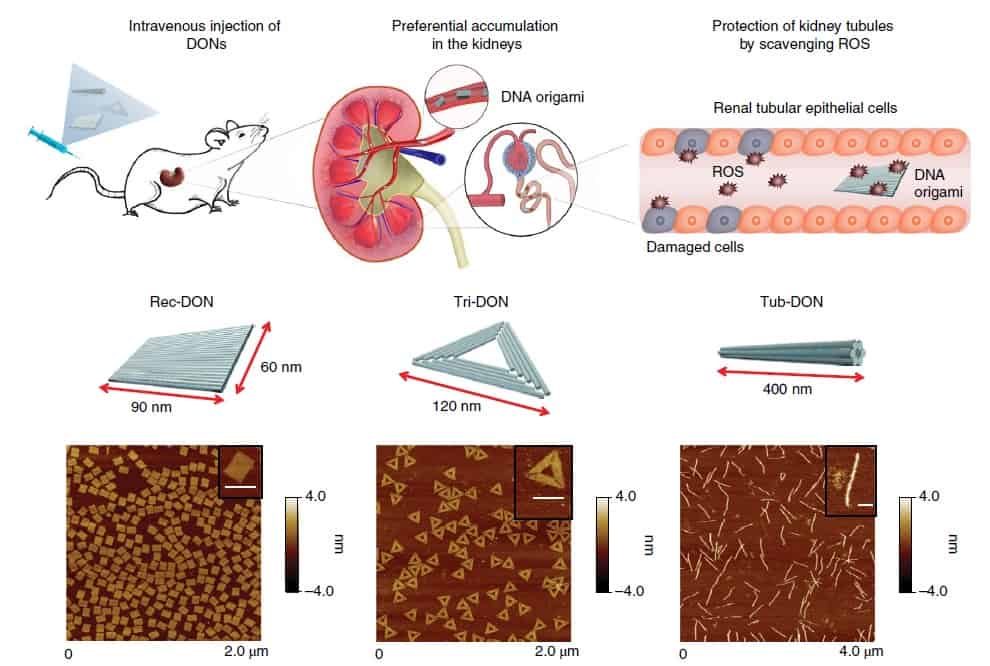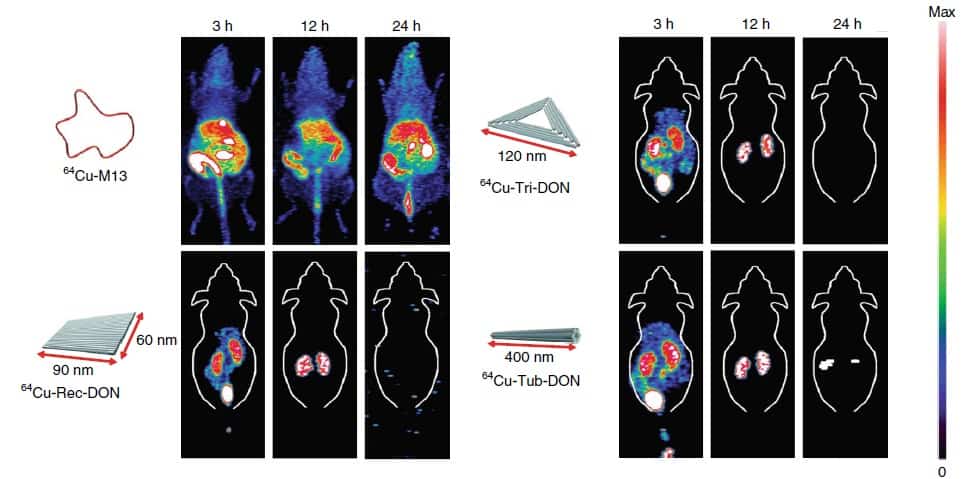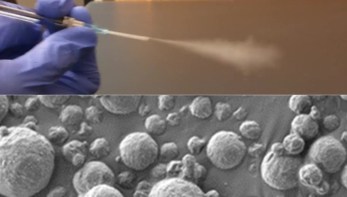
Acute renal failure occurs due to a fast accumulation of nitrogenous species in the urine, which results in reactive oxidative species (ROS) that damage kidney cells. It is a relatively common affliction and, although there are some available therapies such as N-acetylcysteine, acute renal failure has no effective treatment.
Nanomedicine — or design of materials at the nano-scale for biomedical applications — has undergone enormous advancements in the past decade, including the development of technologies for kidney targeting. Until now, however, researchers have had limited success at developing nanomedicine therapies that effectively target acute kidney failure.
Folding DNA to target the kidney
DNA nanotechnology permits manipulation of DNA to form tailored nanostructures — or DNA origami nanostructures (DONs). It makes use of the DNA bases coupling (intra- and inter-molecular Watson-Crick base pairing) to build complex nanostructures. Now, an interdisciplinary research collaboration from USA and China has published a study in which they employ DNA nanotechnology to treat acute kidney failure (Nature Biomed. Eng. 10.1038/s41551-018-0317-8).
The researchers designed DNA strands to produce DONs with rectangular, triangular and tubular shapes, using a simple annealing procedure. Then, they radiolabelled the DONs and injected them into healthy mice to assess their accumulation in the kidneys. Interestingly, the researchers observed that of the three kinds of DONs, the rectangular shapes showed the most efficient renal accumulation. In addition, after 24 hours, all the DONs were completely cleared from the mice bodies by excretion.
Afterwards, the research team tested whether or not the rectangular DONs also accumulated in the kidneys of mice suffering from acute kidney failure. They observed that rectangular DONs did indeed accumulate in the diseased kidneys. The renal uptake of the DONs was attributed to three factors: the DNA folding protecting the DNA from enzymatic digestion in the blood; the negative charge of DNA preventing the attachment of proteins and accumulation in the liver; the specific shape and nanometric size of DONs allowing them to penetrate the kidney filtration barriers.

DONs healing kidneys
Finally, the researchers questioned whether the rectangular DONs could have a healing effect in kidneys. They hypothesized that DONs can alleviate the damage of ROS on kidney cells, since their bases neutralize the oxidizing agents.
First, in vitro experiments with the DONs confirmed the neutralization of ROS and the protective effect on cells. Later, the researchers treated diseased mice with either rectangular DONs, N-acetylcysteine or unfolded DNA. Remarkably, the rectangular DONs had the same therapeutic effect on recovering renal function as high doses of N-acetylcysteine — the current gold standard treatment. Additional experiments also confirmed the low immune response, low toxicity and lack of secondary effects of the DONs.
The work resulted in an effective treatment based on DONs, targeting kidneys in mice with acute renal failure. The team believe that, despite the outstanding results, further investigation is still needed to improve kidney targeting by DONs. They foresee the drug-loading and production of DONs on a large scale, which would represent a great advancement for the cheap and effective treatment of a wide spectrum of renal diseases.



